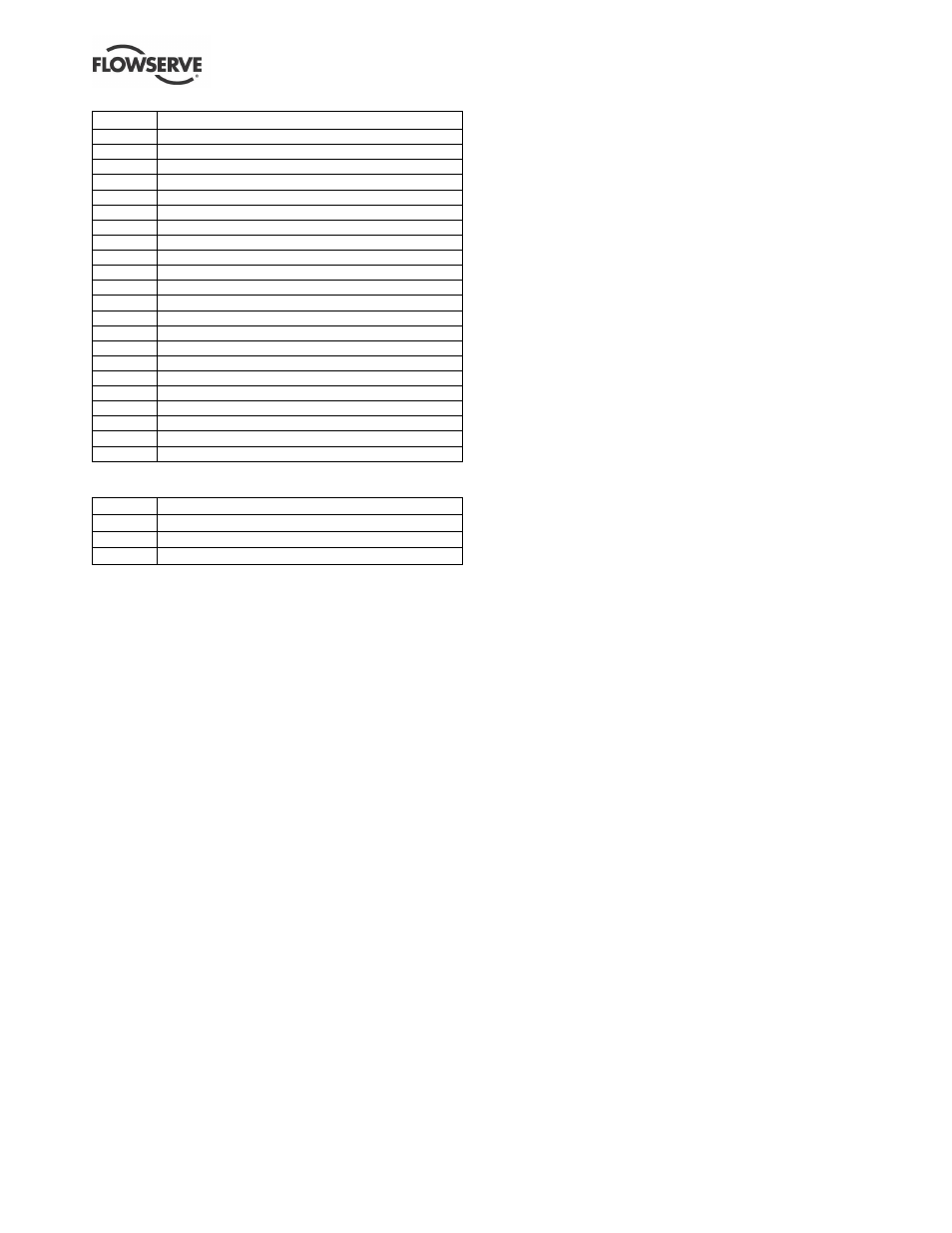5 submersible motor – Flowserve PLEUGER User Manual
Page 12

PLEUGER STANDARD USER INSTRUCTIONS ENGLISH 71569293 01-13
Page 12 of 40
flowserve.com
Ref.
Description
1a
Submersible motor
1b
Submersible pump
2
Check valve
3
Riser pipe
4
Cable clips
5
Support clamp
6
Elbow
7
Control valve
8
Delivery pipe
9a
Pressure vessel
9b
High level tank
10
Terminal box for power cable
11
Switchgear or switchboard
12a
Pressure switch
12b
Float switch
13
System fuses
14
Centering device
15
Pressure gauge
16
Well shaft vents
17
Double orifice air valve
18
Safety valve
19
Check valve (optional)
For safe operation, the following are also
recommended:
20a
Water level detector, upper
20b
Water level detector, lower
21
Pressure sensor for water level measuring system
22
Flowmeter
Explanations and abbreviations:
DB Well diameter
E
T
Installation depth
L
A
Unit length incl. check valve
US Lower operating level = dry running protection
OS Upper operating level (only for automatic operation
Ü
Minimum water level above pump outlet
V
To the consuming device
W
T
Minimum (dynamic) water level
(depending on NPSH)
A
Connection for a three-phase motor
B
Connection for a single-phase motor
3.5 Submersible motor
The so-
called “wet” electric motor is a water-filled
three-phase AC squirrel-cage motor with a watertight
winding, which is operating in water and is designed
especially for direct drive of submersible pumps. The
motor filling-water cools the winding and bearings as
well as lubricating the thrust and radial bearings.
The submersible-motor-pump is connected to the
lower end of a riser pipe and submerged in the
pumped medium. The power supply is through water
resistant power cables fastened to the riser pipes with
cable clips.
For operation the motor must be filled with potable
water. Antifreeze can be added to the potable water
if there is a risk of freezing.
As the motor is hermetically sealed and equipped
with a pressure/volume compensating device the
motor filling remains in the motor for the duration of
operation.
On motors larger than 10 in. (254 mm) an impeller
fitted on the motor shaft provides an internal water
circuit for better cooling.
When the unit is operating, the motor filling-water
becomes warm and increases in volume. Excess water
is released through a vent valve/pressure relief valve
located at the top of the motor. After the unit is switched
off, the filling-water cools down and the volume
decreases. A breather diaphragm compensates for the
lower pressure resulting from the decrease in volume.
This arrangement avoids under-pressure in the motor
and the ingress of pumped medium. The change of
volume by varying temperatures continues over the
entire lifetime of the pump unit.
Although the motor filling-water and the pumped
liquid surrounding the motor will mix if there is
leakage from the seals, the motor remains operative
due to its water-lubricated journal bearings.
At lower installation depth the motor can, on
customer request, be equipped with a header tank
connected to the motor with a filling and venting
pipeline instead of a pressure compensating system.
Basically, “wet” motors operate maintenance-free
with the ammeter acting as a monitoring device.
The internal temperature of the motor can be
monitored with one or two additional temperature
sensors mounted inside the end coils of the motor
winding. These sensors can trigger a high
temperature warning signal or switch off the motor.
3.5.1 Stator winding
The stator winding consists of winding wire provided
with special insulation.
The power cables are connected to the winding by a
special watertight splice and leave the motor through
stuffing boxes.
The winding and cable connections are tested at high
voltage according VDE 0530 IEC60034-1 immersed
in water, at twice the operating voltage plus 1 000
volts, or a minimum of 2 000 volts.
